Berlin

Home | Hamburg | Lauenberg | Tangermünde | Berlin | Wittenberg | Torgau | Meissen | Dresden | Saxony | Prague
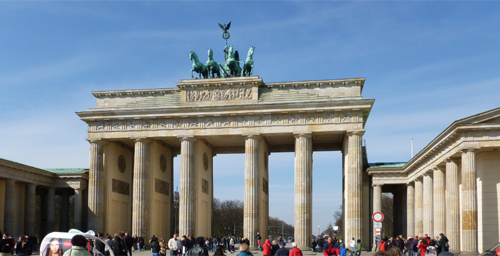
During the night we sailed to Magdeburg and early in the morning we rode a bus to Berlin. There we were taken on a tour of the city, stopping at the Brandenberg gate.
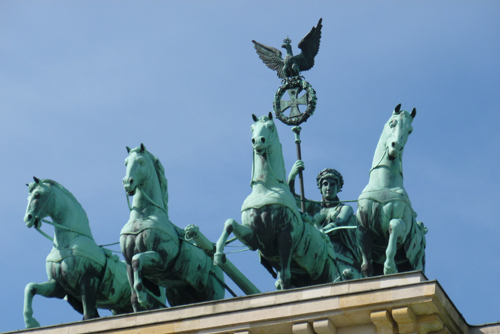
The Berlin Quadriga at the top of the gate was designed in 1793 as the Quadriga of Victory, as a symbol of peace (represented by the olive wreath carried by Victory). Located atop the Brandenburg Gate in Berlin, Germany, it was seized by Napoleon during his occupation of Berlin in 1806, and taken to Paris. It was returned to Berlin in 1814. Her olive wreath was subsequently replaced by an Iron Cross. The statue suffered severe damage during the Second World War, and the association of the Iron Cross with Prussian militarism convinced the Communist government of East Germany to remove this aspect of the statue after the war. The iron cross was restored after German reunification in 1990.
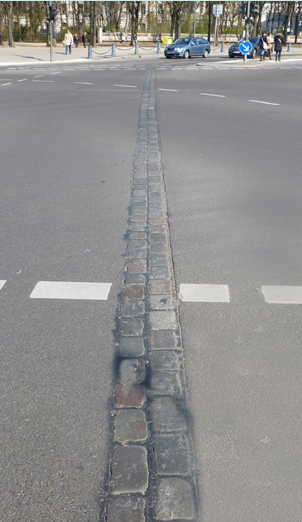
Throughout the city, a row of bricks shows the position of the former Berlin wall. This was a barrier constructed by the German Democratic Republic (GDR, East Germany) starting on 13 August 1961, that completely cut off West Berlin from surrounding East Germany and from East Berlin.
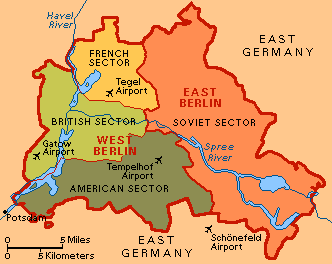
Another stop was in front of the Templehof Airport, used in the Berlin Air Lift. On 20 June 1948 Soviet authorities, claiming technical difficulties, halted all traffic by land and by water into or out of the western-controlled section of Berlin. The only remaining access routes into the city were three 20 mi (32 km)-wide air corridors across the Soviet-occupied zone of Germany. Faced with the choice of abandoning the city or attempting to supply its inhabitants with the necessities of life by air, the Western Powers chose the latter course, and for the next eleven months sustained the city's 2½ million residents in one of the greatest feats in aviation history. Nearby is the Berlin Airlift Memorial which symbolizes the three air corridors used by the British and American pilots.
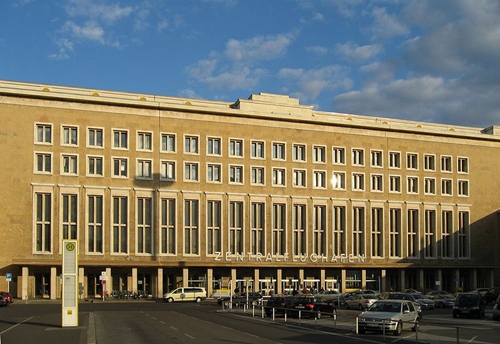 :
: 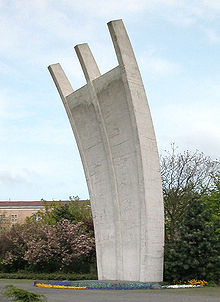
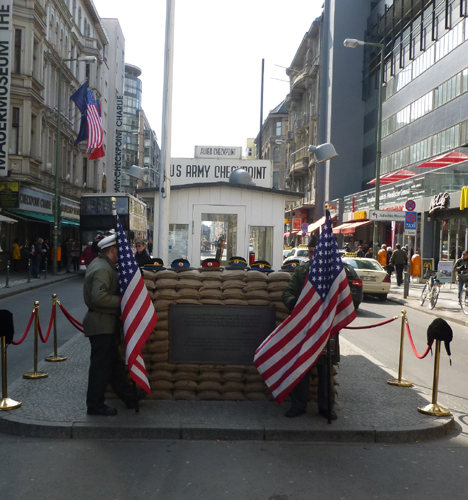
Our next stop was at Checkpoint Charlie.
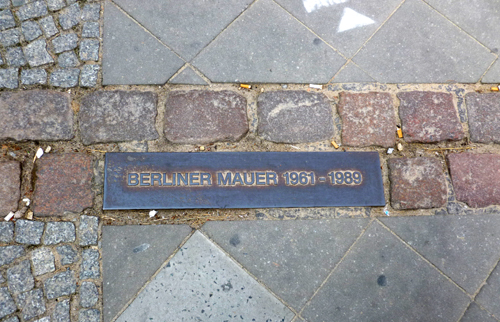
Nearby was another reminder of the wall.
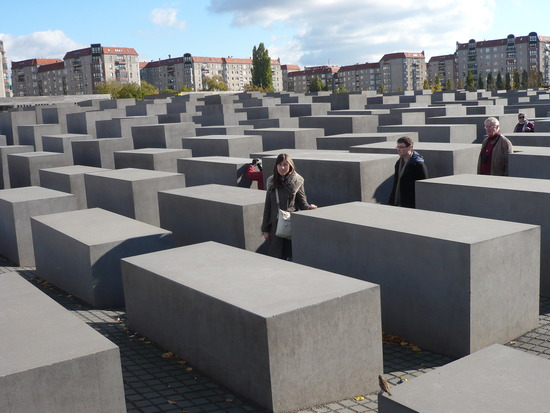
The Memorial to the Murdered Jews of Europe is a large and unusual Holocaust memorial unveiled in May 2005 in central Berlin. The memorial consists of 2,700 concrete blocks on undulating ground, Visitors are encouraged to walk among the stones.
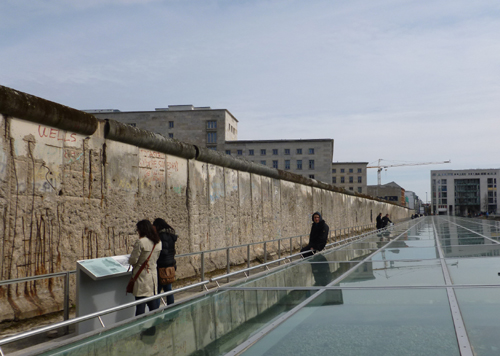
Our last stop on the city tour was at a section of the wall which has been retained.

We were given free time in the afternoon and Elizabeth and Don decided to go to the Pergamon Museum, which houses original-sized, reconstructed monumental buildings such as the Pergamon Altar and the Market Gate of Miletus, all consisting of parts transported from Turkey.
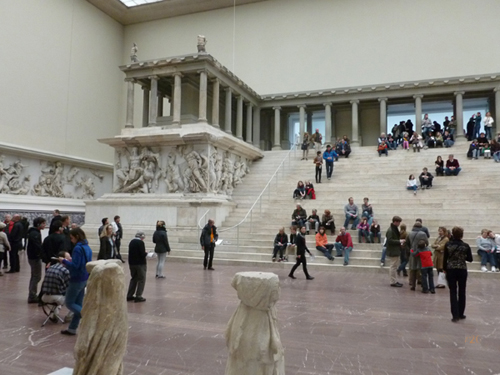
The star of the Classical Antiquities department is the Zeus Altar (180-160 BC), which is so large (about 100 feet wide) that it has a huge room all to itself and took me two photos to show it.
We had seen the original site of this altar in Pergamum, which is mentioned in the Book of Revelation. There are a few photos of the present ruins there in my website record of our visit there.
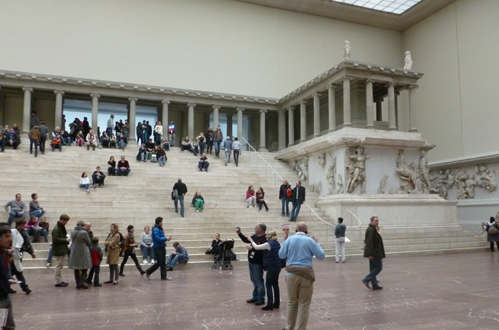


From the top of the stairs we could see a part of the 370 feet of frieze which originally surrounded the altar and now surrounds the room.
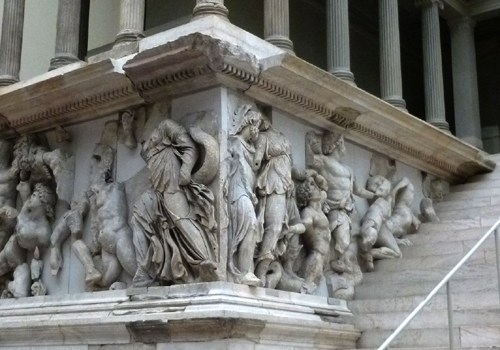
The frieze took over 20 years to reassemble from thousands of fragments uncovered in modern-day Bergama, Turkey. Most fascinating is the frieze around the base, which depicts the struggle of the Olympian gods against the Titans. It is strikingly life-like, with figures that project as much as a foot from the background..
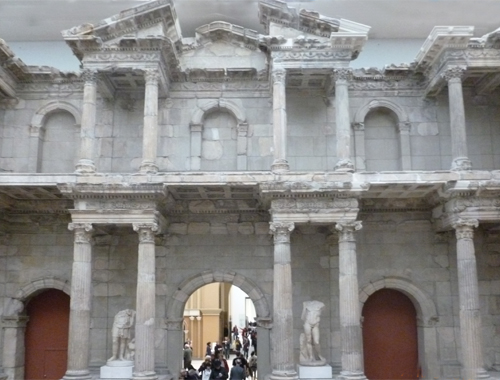
This department also contains the Market Gate of Miletus, which dates from about 120 AD. It is almost 55 feet high and 100 feet wide. The well preserved elements of the gate, which were destroyed by an earthquake around the year 1100, were dug up by Theodor Wiegand during the museum's excavations (1899-1913).
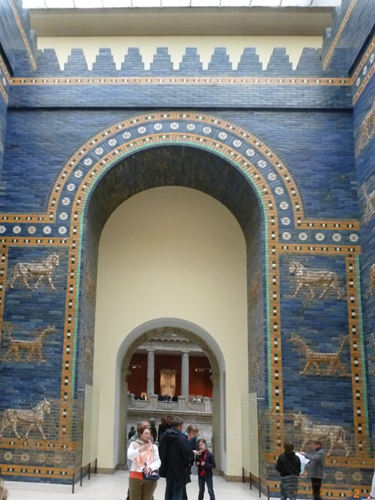
Other exhibits included the Processional Way of Babylon with the Ishtar Gate, which was the eighth gate to the inner city of Babylon. It was constructed in about 575 BC by order of King Nebuchadnezzar II on the north side of the city. It was named after the Akkadian goddess Ishtar. It is part of a double gate; the part that is shown in the Pergamon Museum today is the smaller, frontal part and is about 47 feet high and 100 feet wide. The larger, back part was considered too large to fit into the constraints of the structure of the museum; it is in storage.
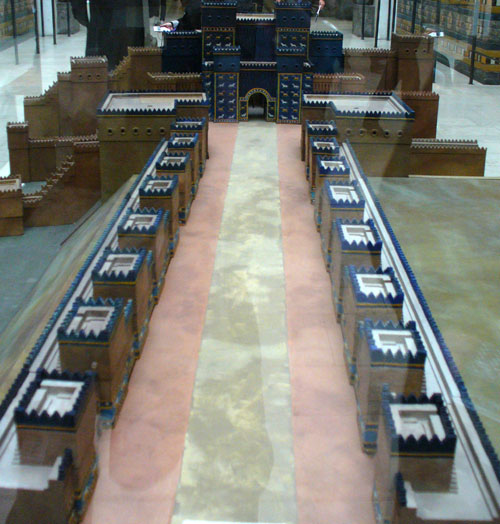
Leading up to the gate was a processional way, as shown in this model.
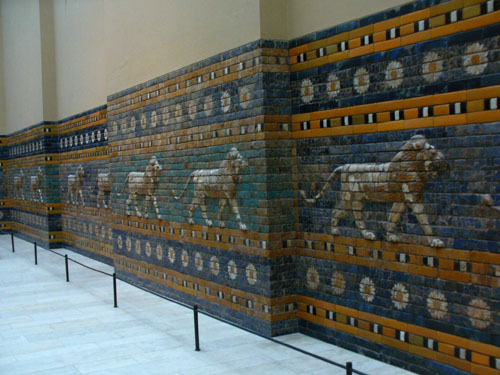
The right side of the processional way, as preserved in the Pergamon Museum.
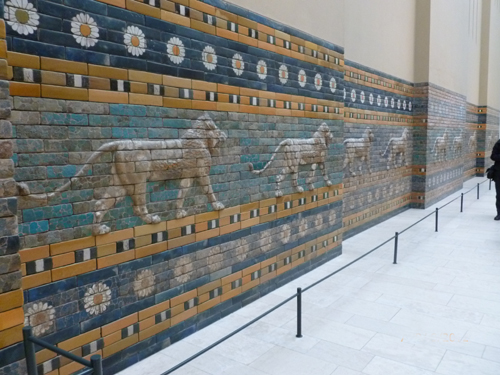
The left side.

A closeup of the lions.

Assyrian soldiers from the Palace of Sennacherib in Nineveh, from about 600 BC.
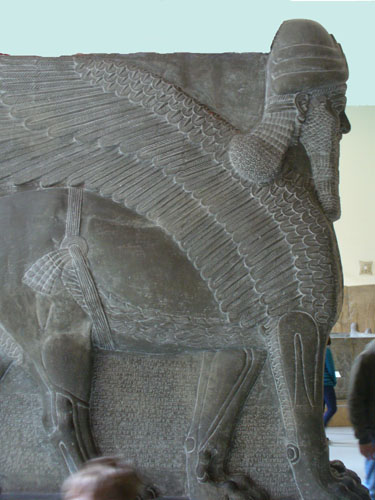
A lion with wings and a man's head to guard Assyria's royal palaces.
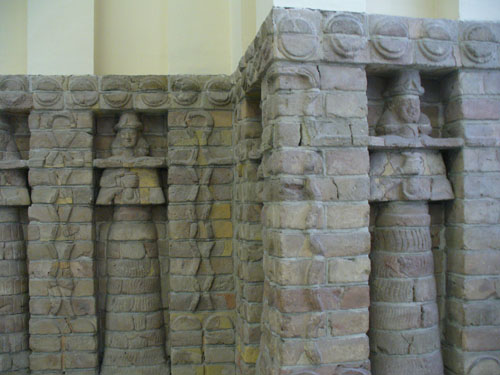
A fragment of the facade of an Inanna Temple, around 1413 BC.
There was much more, including an entire floor of Islamic Art, featuring miniatures, carpets, woodcarvings and illuminated manuscripts. But we were unable to take it all in as we had to get back to the bus for the ride back to Magdeburg.
Next we sail to Wittenberg.